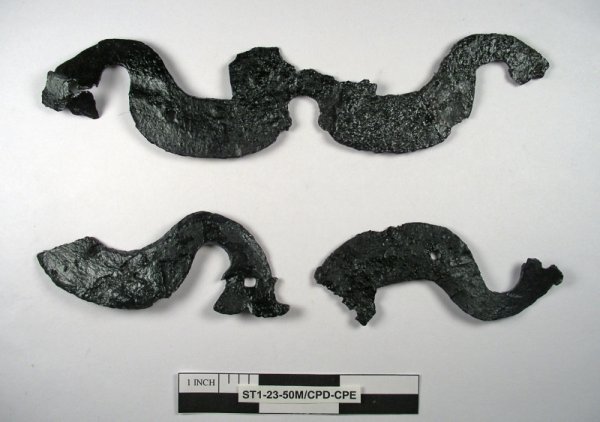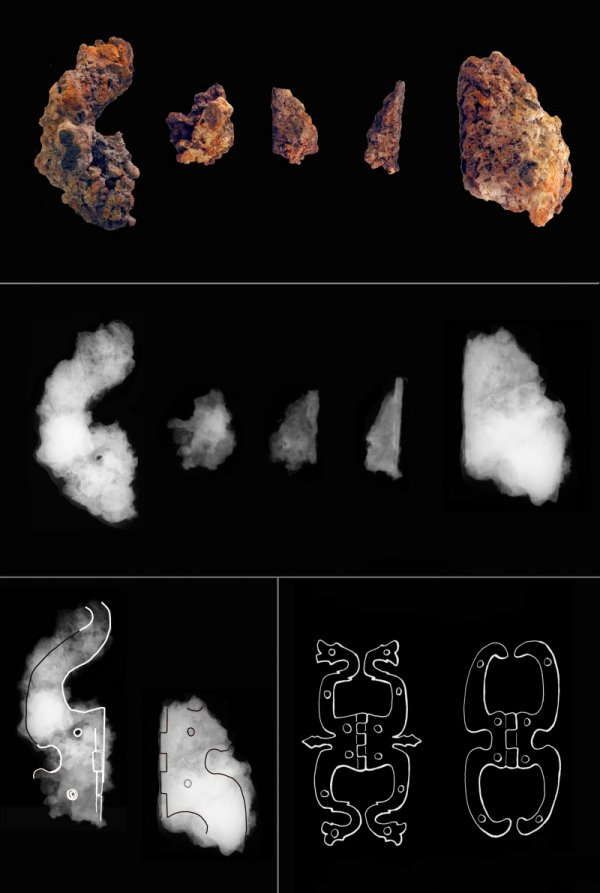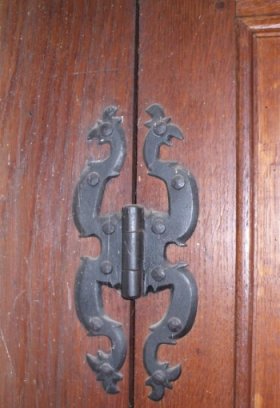Cocks Head Hinge

Conservator’s Notes
When these fragments of iron were excavated in the 1970s from the St. John’s Site little information was known about them. The iron fragments were stored together and listed in the inventory as ‘hinge fragments?’. In 2002, the iron fragments were pulled for x-radiography during a detailed condition survey of the collections. After careful examination of the x-radiography results [see below] it became clear that the iron fragments contained pieces of what appeared to be a decorative hinge—with small nail holes and curved edges visible in the image.
Using tools such as x-radiography and computer technology, conservators and archaeologists are able to manipulate the images, revealing features not usually visible. In this case, fragments of a cock’s head hinge were revealed. A cock’s head hinge is a decorative hinge from the 17th century whose four points are shaped into the heads of a cockerel.
The hinges were most likely used on cupboards or furniture doors. The x-radiographs allowed the conservators to assess the condition of the hinge and establish a treatment plan for cleaning the fragments. The x-radiograph images were layered with a historical illustration of the hinge to reveal the parts of the hinge. Some of the artifacts were so corroded it was not possible to perform conservation treatment on them.
After initial discovery of the fragments of the first hinge, several other parts of the same hinge were identified and treated. These fragments were treated in the conservation laboratory and obscuring corrosion was removed using mechanical cleaning methods to reveal the surfaces and shape of the cock’s head hinge. Although all 3 fragments came from the same context and probably the same hinge, they were unable to be joined after conservation.

Curator’s Notes

Made of iron, cock’s head hinges were very decorative and often used in built-in cabinetry and occasionally furniture. This specimen was found in a filled posthole near the kitchen outbuilding at the St. John’s site which was occupied from 1638 to ca. 1715. This class of hinge was called a cock’s head because of its resemblance to a rooster’s head. The specimen illustrated to the right is an extant example from Lord Baltimore’s house of Hook Manor in the county of Wiltshire, England.


